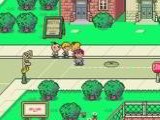

If you are using the Brave browser, or have installed the Ghostery add-on, these programs send extra traffic to our servers for every page on the site that you browse, then send that data back to a third party, essentially spying on your browsing habits.We strongly recommend you stop using this browser until this problem is corrected. The latest version of the Opera browser sends multiple invalid requests to our servers for every page you visit.The most common causes of this issue are: In 2010, the console accounted for 39 titles exceeding the million copies sold.Your IP address has been temporarily blocked due to a large number of HTTP requests. Nintendo sold the Famicom at cost, not deeming it necessary to earn money on it. In parallel, at the end of the years 1980, a Japanese home in three is equipped with the Famicom, and Nintendo is the most profitable Japanese company in front of Toyota. Encouraged by this success, Nintendo soon turned its attention to the North American market. Against all odds, it is sold to 500 000 copies in two months, becoming the best-selling console in Japan towards the end of the year 1984. After the product was recalled and reissued with a new motherboard, the popularity of the Famicom climbed. The beginnings of the Famicom (Family Computer) are rather difficult: during the first few weeks, many criticized the console by judging it unreliable, prone to malfunctions and big slowdowns. The 10 000 ¥ bar is outdated, but it remains the cheapest machine of the time, and the most powerful bonus on the market. Masayuki Uemura and his team design the system by demonstrating ingenuity and saving on the smallest detail to meet the requirements of the President.Īfter two years of work, she went out to Japan on Jfor 14 800 ¥, accompanied by three portals of Nintendo's bestselling arcade games: Donkey Kong, Donkey Kong Jr. In addition, it should cost less than 10 000 ¥. At that time, President Hiroshi Yamauchi told his employees that he wanted a console whose performance would be such that competition could neither copy nor match it for at least three years. Its design starts in 1981 under the name Code Young computer.

For the sake of economy, the first Famicom was red because the red plastic was the cheapest of all at the time.

After meeting the success with a series of arcade games in the early 1980, Nintendo planned as of November 1981 the production of an interchangeable cartridge lounge console, a device not included on the Color TV Game.


 0 kommentar(er)
0 kommentar(er)
